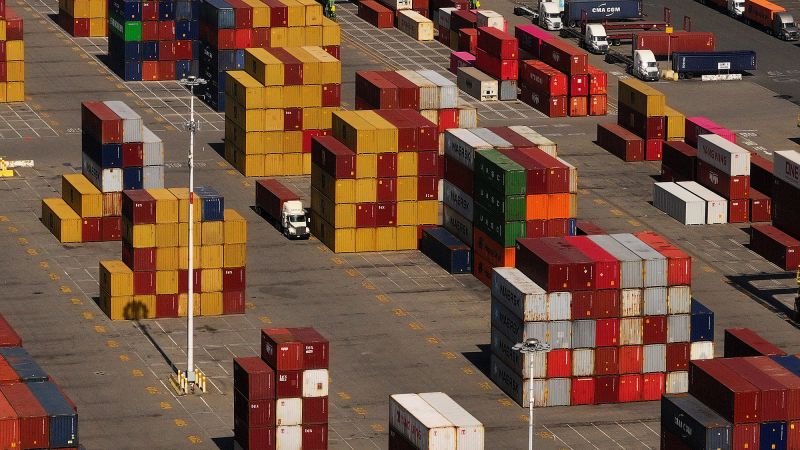In recent developments surrounding President Donald Trump’s trade policies, there has been considerable discussion about the chaotic nature of his administration’s tariff implementation. Officials, including Treasury Secretary Scott Bessent, have suggested that the erratic rollout of these tariffs was part of a deliberate strategy to keep foreign trading partners unsure and off balance, creating what they refer to as “strategic uncertainty.” This claim has been met with skepticism, especially when weighed against the haphazard changes and frequent concessions that have characterized the tariff landscape.
Trump has often boasted about his understanding of tariffs, stating at a White House event, “Tariffs are the most misunderstood thing maybe in any form of business.” His trade adviser, Peter Navarro, further contributed to this narrative by likening Trump’s approach to a complex game of “3D chess,” a strategy that, according to Navarro, is beyond the comprehension of the media and mainstream economists. However, this supposed strategic brilliance appears to falter under scrutiny of the administration’s actions and public declarations.
The incoherence in Trump’s tariff strategy is glaring when considering the administration’s recent announcements, which indicated new tariffs for various nations seeking to negotiate trade deals. However, many of these countries were unable to meet with U.S. officials during the critical three-month pause in talks. The proclaimed intent of creating a fair negotiating environment is then undermined by the reimposition of tariffs and the absence of a solid deal structure to guide these interactions.
The administration has also announced competitive tariffs intended to assert American economic dominance without a real basis in successful negotiations. While proponents of high tariffs argue that they are essential for incentivizing the return of manufacturing to the U.S., the reality is that manufacturing shifts are expensive, time-consuming, and uncertain given the unpredictability of ongoing tariff regulations.
For instance, just recently, Trump’s administration slashed tariffs on Chinese goods from a staggering 145% down to approximately 30%, with limited gains in reciprocal actions from China. Moreover, the administration has granted significant carve-outs for foreign-made auto parts and electronics, which further diminishes the strength of a so-called trade war strategy.
From the perspective of industry experts, such as Seth Carpenter, Morgan Stanley’s chief global economist, it is foolish to expect immediate economic boosts from these tariffs. The hesitancy among businesses to relocate production to the U.S. hinges on the necessary long-term stability of tariff rates, which are now in fluxier than ever. The unpredictability of enforcement creates an environment of hesitation rather than positive economic stimuli.
Compounding this issue, major American retailers like Walmart and Home Depot have started to raise consumer prices due to the financial pressures of tariffs. This indicates a more troubling trend: Tariffs are not merely raising costs for companies but are directly impacting consumer pricing, as businesses struggle to balance profit margins under the weight of this fluctuating tariff regime.
As debates around the efficacy of Trump’s trade policies unfold, fringe theories have also gained traction, such as the notion that the trade war was deliberately initiated to drive the stock market into a downturn, thus bolstering safe-haven assets and providing an avenue for tax cuts aimed at stimulating the economy. However, this theory is similarly undermined by contrary evidence, including a stock market rally following certain tariff exemptions and a surprisingly stable long-term bond market.
In summation, the chaotic and reactionary nature of Trump’s tariffs suggest that rather than a strategic game akin to chess, the reality of his economic policy resembles chaos theory. The constancy of unclear objectives, erratic announcements, and the disconnect between policy intentions and real-world impacts raise significant concerns about the overall approach to trade and economic stability under the current administration. Moving forward, it remains to be seen whether any coherent strategy can emerge from a landscape characterized by unpredictability and tension.



